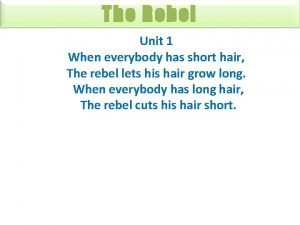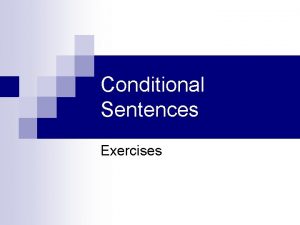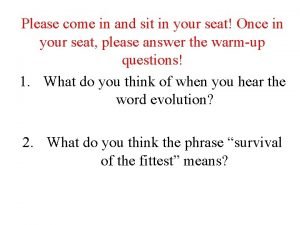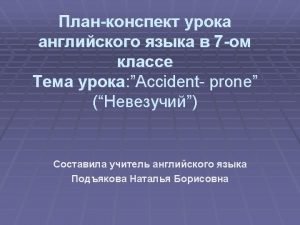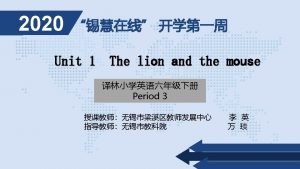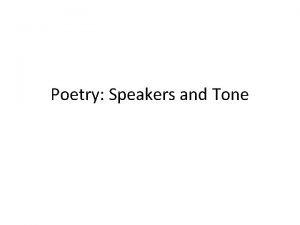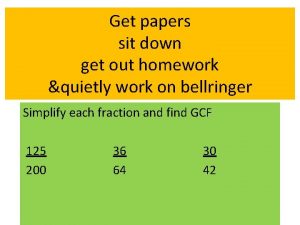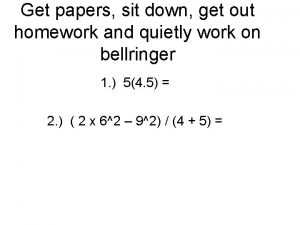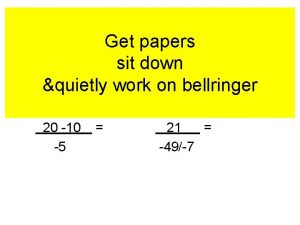Get papers sit down get out homework quietly




































- Slides: 36

Get papers sit down get out homework &quietly work on bellringer Solve -4^2 (-2)^3 (-3)^4

Solve -4^2 -16 (-2)^3 -8 (-3)^4 81

Get papers sit down get out homework &quietly work on bellringer Solve -2^2 (-2)^4 (-3)^3

Solve -2^2 -4 (-2)^4 16 (-3)^3 -27

Prime Factorization 2 -2

http: //www. brainpop. com/math/n umbersandoperations/factoring/ u Brainpop - Factoring video. . Answer the questions

http: //www. brainpop. com/math/numbersandoperations/factoring/quiz/ Answers: 1. 2. 3. 4. 5. 6. 7. 8. 9. 10. C D B A A D C B C A

Factor The numbers that are multiplied to get a product 15 = 3 x 5 3 and 5 are factors of 15 3 x 2 =6 3 & 2 are factors of 6 2 x 9 = 18 2 & 9 are factors of 18

Prime Number is a counting number that only has two factors, itself and one. One is not a prime 7 is a prime 5 is a prime

Composite Number Counting numbers which have more than two factors (such as six, whose factors are 1, 2, 3 and 6) One is not a composite 55 is a composite 8 is a composite

A Rhyme to Help Us Remember Prime number What do you see? I see no other factors Except for one and me. Composite number What do you see? I see at least three factors Including one and me.

All of the orange numbers on this chart are prime. Write them down. Refer to them so you don’t waste time trying to factor them. 1 2 3 4 5 6 7 8 9 10 11 12 13 14 15 16 17 18 19 20 21 22 23 24 25 26 27 28 29 30 31 32 33 34 35 36 37 38 39 40 41 42 43 44 45 46 47 48 49 50 51 52 53 54 55 56 57 58 59 60 61 62 63 64 65 66 67 68 69 70 71 72 73 74 75 76 77 78 79 80 81 82 83 84 85 86 87 88 89 90 91 92 93 94 95 96 97 98 99 100

Prime Factorization When a composite number is written as a product of all of its prime factors Using the Factor Tree 78 / 2 x 39 / / 2 x 3 x 13

Let’s Try a Factor Tree! 84 / 2 x 42 / / 2 x 21 / / / 2 x 2 3 x 7

Factor Trees do not look the same for the same number, but the final answer is the same. 72 / 8 x 9 / 2 x 4 x 3 x 3 / 2 x 2 x 3 x 3 72 / 2 x 36 / / 2 x 18 / / / 2 x 2 x 9 / / 2 x 2 x 3 x 3

Greatest Common Factor The largest common factor of 2 or more numbers Use prime factorization or ladder to find GCF of 24 and 36 Is 12 GCF of 72 and 84 Is 12

Prime Factorization is helpful for finding greatest common factors. 72 / 8 x 9 / 2 x 4 x 3 x 3 / 2 x 2 x 3 x 3 Take the common prime factors of each number and multiply to find the greatest common factor. 84 / 2 x 42 / / 2 x 21 / / / 2 x 2 3 x 7 2 x 3 = 12

Least Common Multiple The smallest product that both numbers have in common LCM of 4 & 10 is 20 LCM of 5 & 7 Is 35 LCM of 12 & 15 Is 60

Use the Ladder for LCM, GCF and Simplifying Fractions WRITE the two 2 72 84 numbers on one line. 2 36 42 DRAW THE L SHAPE DIVIDE out common 3 18 21 prime numbers 6 starting with the 7 smallest LCM = 2 2 3 6 7 = 504 LCM makes an L: GCF = 2 2 3 = 12 72 6 Simplified fraction is on the bottom = 84 7 GCF is down the left side:

Use the Ladder for LCM, GCF and Simplifying Fractions WRITE the two 2 24 36 numbers on one line. DRAW THE L SHAPE 2 12 18 DIVIDE out common 3 6 9 prime numbers starting with the 2 3 smallest LCM = 2 2 3 = 72 LCM makes an L: GCF = 2 2 3 = 12 24 2 Simplified fraction is on the bottom = 36 3 GCF is down the left side:

Use the Ladder for LCM, GCF and Simplifying Fractions WRITE the two 3 6 numbers on one line. DRAW THE L SHAPE 2 DIVIDE out common prime numbers starting with the smallest LCM = 3 2 3 = 18 LCM makes an L: GCF is down the left side: GCF = 3 Simplified fraction is on the bottom 6 9 9 3 2 = 3

Use the Ladder for LCM, GCF and Simplifying Fractions WRITE the two 5 1 numbers on one line. DRAW THE L SHAPE 5 DIVIDE out common prime numbers starting with the smallest LCM = 5 x 7 = 35 LCM makes an L: GCF is down the left side: GCF = 1 Simplified fraction is on the bottom 7 7 5 = 7

HOMEWORK u PG 77 4 – 40 evens only 8 -16 use ladder 26 -32 use factor trees 34 -40 use ladder method

HOMEWORK u Ps 2 -2 evens only 2 -14 ladder 20 -26 factor tree use exponents 28 -34 ladder






Resources u Brain Pop – Prime Factors - Prime Numbers - Exponents

Interactive Practice for Factor Trees 1. 2. 3. Virtual Manipulatives Interactive Practice 1 Interactive Practice from Math. Playground. com

The Birthday Cake Method a. k. a. The Box Method An alternative to factor trees A video from You. Tube

Challenge Problem u Use what you know about multiplying whole numbers by variables and exponents to make a factor tree for the following monomial 9 3 4 5 3 45 x 3 3 x 5 xx x

A Random Thought about Prime Numbers Brought to you from You. Tube. com

Use the Ladder for LCM, GCF and Simplifying Fractions WRITE the two 2 24 36 numbers on one line. DRAW THE L SHAPE 2 12 18 DIVIDE out common 3 6 9 prime numbers starting with the 2 3 smallest LCM = 2 2 3 = 72 LCM makes an L: GCF = 2 2 3 = 12 24 2 Simplified fraction is on the bottom = 36 3 GCF is down the left side:

Big Rocks Quiz tomorrow – Decimal rules #1 Four Sight paper Homework Practice sheet 2 -1 evens only
 Shot me out of the sky one direction
Shot me out of the sky one direction Sit down quietly
Sit down quietly Sit down quietly
Sit down quietly Get on get off
Get on get off When everybody loves cats the rebel
When everybody loves cats the rebel Hands up hands down hands on hips sit down
Hands up hands down hands on hips sit down Sncc sit ins
Sncc sit ins If we sneak out quietly nobody notice
If we sneak out quietly nobody notice Sit in your seat
Sit in your seat Please sit down and your seat belts
Please sit down and your seat belts Sit down quickly
Sit down quickly Grams or kilograms
Grams or kilograms Sit down and take notes
Sit down and take notes The teacher told me to close door and sit down
The teacher told me to close door and sit down Unit 1 hello everybody
Unit 1 hello everybody Please come in and have a seat
Please come in and have a seat Please sit down
Please sit down Come in come in and sit down
Come in come in and sit down Come in come in and sit down
Come in come in and sit down Walt whitman born in new york in 1819
Walt whitman born in new york in 1819 Jack prelutsky homework oh homework
Jack prelutsky homework oh homework Homework oh homework i hate you you stink
Homework oh homework i hate you you stink Jack prelutsky homework oh homework
Jack prelutsky homework oh homework Jack prelutsky homework oh homework
Jack prelutsky homework oh homework Homework oh homework i hate you you stink
Homework oh homework i hate you you stink The zebras cried when the wise old elephant died
The zebras cried when the wise old elephant died Write down your homework
Write down your homework Write down your homework
Write down your homework Take out your homework
Take out your homework Quietly happy meaning
Quietly happy meaning Adjective vs adverb examples
Adjective vs adverb examples Speaker
Speaker She entered into the room quietly
She entered into the room quietly Richard cory figurative language
Richard cory figurative language Enter quietly
Enter quietly Solute solvent
Solute solvent Leave quietly
Leave quietly




